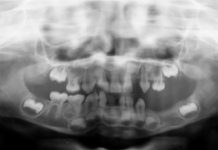For years fluoride has been dentistry’s gold standard in the fight against tooth decay. In 1945, water fluoridation was implemented. A 60% reduction in tooth decay was reported over a 12-year span after water fluoridation. In 1950, the first fluoride toothpastes were marketed.1,2 The discovery of fluoride has no doubt been a huge benefit in reducing tooth decay. Even with the use of fluoride toothpaste and fluoridated water, a staggering 92% of adults between the ages of 20 and 64 have experienced tooth decay.3 Though I am an avid supporter of the use of fluoride to reduce tooth decay, it is becoming quite clear that we need to add some tools to our arsenal in this ongoing fight against tooth decay.
Xylitol may be just the tool we need to reduce tooth decay further. Xylitol is a naturally occurring five-carbon sugar polyol. It is found in fruits, vegetables, and berries. It can also be manufactured using xylan-rich plant materials.
Xylitol has been widely studied over the past 40 years for its effect on tooth decay. Xylitol has been found to reduce the levels of Streptococcus mutans in plaque and saliva by disrupting their energy production process leading to cell death. It has also been shown to reduce adhesion of S. mutans to the tooth surface and reduces their acid production. Xylitol increases saliva flow and pH levels, making it a great option for patients suffering from xerostomia.4
S. mutans is one of the primary bacteria that contribute to early childhood caries. Children often acquire this bacterium from their mothers via vertical or horizontal transmission.7,8 In a controlled trial, researchers compared the effect of xylitol and fluoride in the transmission of S. mutans from mother to child. They discovered the fluoride group had a significant increase in the level of S. mutans when compared to the xylitol group. The study concluded that maternal xylitol consumption provides preventative outcomes on salivary levels of S. mutans and caries risk in children.9
A clinical trial on caries prevention using low dose xylitol gum in high caries risk adults followed 179 subjects over 12 months. The participants chewed the gum for 5 minutes 3 times a day, morning, midday and afternoon. The total daily intake of xylitol was 2.5 grams a day. The study concluded there was a significantly lower caries increment associated with low dose xylitol gum use.5 Xylitol can be found in many chewing gums and hard candies. Recommending the use of xylitol candy and gum in reducing tooth decay may be appealing to some patients, especially children and patients with xerostomia. I believe patient compliance would not be an issue with this homecare method.
Xylitol may be making its way into clinical settings as well. A study in situ evaluating the effect of 20% xylitol varnish on remineralization of artificial incipient lesions found a significant increase in enamel remineralization. The remineralization was found to be as effective as commonly used sodium fluoride varnishes. This study opens the door to clinical trials, to further confirm these findings.6 Xylitol varnish may be a promising alternative to fluoride varnish, especially during this anti-fluoride era we are seeing currently.
Study after study supports the efficacy of xylitol in the reduction of tooth decay. What I find more interesting is that xylitol appears to be kryptonite to many strains of pathogens, not just those associated with tooth decay. Xylitol has been shown to reduce levels of the periodontopathic bacteria Helicobacter pylori and inhibit the effects of Porphyromonas gingivalis.4,10 Considering these studies xylitol may be a promising candidate for the treatment and prevention of periodontitis as well as dental caries.
In vivo studies have found xylitol reduces the risk of candidiasis and angular cheilitis.11 It has prebiotic effects which can reduce glucose, triglycerides, and cholesterol level.12 There is some evidence that xylitol may reduce the occurrence of acute otitis media in children.13 When xylitol is used in conjunction with Red Ginseng as a dietary supplement, it has been found to effectively ameliorate influenza-induced symptoms from the influenza A virus (H1N1).14 It seems that xylitol has a promising future in pharmaceuticals and nutrition.
Though xylitol is safe and has been shown effective in treatments for many different medical and dental diseases in humans, it is not safe for our furry friends, particularly dogs. Xylitol ingestion in dogs may lead to severe hypoglycemia followed by acute kidney failure and other bleeding disorders. Immediate treatment by a veterinarian is necessary in the event a dog ingests xylitol-containing products.15
I am excited about the possibilities for the future of xylitol in dentistry. More options for patients lead to better compliance and hopefully lower percentages of tooth decay. Every patient needs an individualized plan for the prevention of dental diseases. Though fluoride has been shown effective and safe, some patients may better benefit from xylitol rinses or toothpaste. We can be mindful and respect patients that prefer to use non-fluoridated products by recommending other options that have been shown to be effective, such as xylitol.
Resources
- American Dental Association. History of Dentistry Timeline. Retrieved from https://www.ada.org/en/about-the-ada/ada-history-and-presidents-of-the-ada/ada-history-of-dentistry-timeline
- National Institute of Dental and Craniofacial Research. The Story of Fluoridation. Retrieved from https://www.nidcr.nih.gov/health-info/fluoride/the-story-of-fluoridation
- National Institute of Dental and Craniofacial Research. Dental Caries (Tooth Decay) in Adults (Age 20 to 64). Retrieved from https://www.nidcr.nih.gov/research/data-statistics/dental-caries/adults
- Prathibha Anand Nayak, Ullal Anand Nayak, and Vishal Khandelwal. The Effect of Xylitol on Dental Caries and Oral Flora. Clin Cosmet Investig Dent. 2014; 6: 89-94. Retrieved from https://www.ncbi.nlm.nih.gov/pmc/articles/PMC4232036/
- Fabio Cocco, Giovanna Carta, Maria Grazia Cagetti, Laura Strohmenger, Peter Lingstrom, and Guglielmo Campus. The Caries Preventive Effect of 1-year use of Low-dose Xylitol Chewing Gum. A Randomized Placebo-controlled Clinical Trial in High-caries-risk Adults. Clin Oral Investig. 2017; 21(9): 2733-2740. Retrieved from https://www.ncbi.nlm.nih.gov/pmc/articles/PMC5693987/
- Cardoso CA, Cassiano LP, Costa EN, Souza-E-Silva CM, Magalhaes AC, Grizzo LT, Caldana ML, Bastos JR, Buzalaf MA. Effect of Xylitol Varnishes on Remineralization of Artificial Enamel Caries Lesions in situ. J Dent 2016 Jul;50:74-8. Retrieved from https://www.ncbi.nlm.nih.gov/pubmed/27032722
- Binks C, Duane B. Mother-to-child Transmission of Streptococcus Mutans. Evid Based Dent. 2015 Jun; 16(2):39-40. Retrieved from https://www.ncbi.nlm.nih.gov/pubmed/26114782
- Berkowitz RJ. Mutans Streptococci: Acquisition and Transmission. Pediatr Dent. 2006 Mar-Apr;28(2): 106-9.Retrieved from https://www.ncbi.nlm.nih.gov/pubmed/16708784
- Alamoudi NM, Hanno AG, Almushayt AS, Masoud MI, El Ashiry EA, El Derwi DA. Early Prevention of Childhood Caries with Maternal Xylitol Consumption. Saudi Med J. 2014 Jun; 35(6): 592-7. Retrieved from https://www.ncbi.nlm.nih.gov/pubmed/24888659
- Su-Ji Han, So-Yeon Jeong, Yun-Ju Nam, Kyu-Ho Yang, Hoi-Soon Lim, and Jin Chung. Xylitol Inhibits Inflammatory Cytokine Expression Induced by Lipopolysaccharide from Porphyromonas gingivalis. Clin Diagn Lab Immunol. 2005 Nov; 12(11): 1285-1291. Retrieved from https://www.ncbi.nlm.nih.gov/pmc/articles/PMC1287760/
- Talattof Z, Azad A, Zahed M, Shahradnia N. Antifungal Activity of Xylitol against Candida albicans: An in vitro Study. J Contemp Dent Pract. 2018 Feb 1; 19(2): 125-129. Retrieved from https://www.ncbi.nlm.nih.gov/pubmed/29422459
- Ur-Rehman S, Mushtag Z, Zahoor T, Jamil A, Murtaza MA. Crit Rev Food Sci Nutr. 2015;m55(11): 1514-28. Retrieved from https://www.ncbi.nlm.nih.gov/pubmed/24915309
- Azarpazhooh A, Limeback H, Lawrence HP, Shah PS. Xylitol for Preventing Acute Otitis Media in Children up to 12 years of age. Cochrane Database Syst Rev. 2011 Nov 9; (11). Retrieved from https://www.ncbi.nlm.nih.gov/pubmed/22071833
- Sun Young Yin, Hyoung Jin Kim, and Hong-Jin Kim. Protective Effect of Dietary Xylitol on Influenza A Virus Infection. PloS One. 2014; 9(1): e84633. Retrieved from https://www.ncbi.nlm.nih.gov/pmc/articles/PMC3879333/
- Murphy LA, Dunayer EK. Xylitol Toxicosis in Dogs: An Update. Vet Clin North Am Small Anim Pract. 2018 Nov; 48(6): 985-990. Retrieved from https://www.ncbi.nlm.nih.gov/pubmed/30064708











